Click on the names below to read sample posts from our Facebook page.
It is with much sadness that we share the news that Ziv Begun, head of the Israeli Association of Jews from David-Horodok has passed away. Ziv enriched the lives of David-Horodokers throughout the world. May his memory forever be a blessing.
Our deepest condolences to his family. הַמָּקוֹם יְנַחֵם אֶתְכֶם בְּתוֹךְ שְׁאָר אֲבֵלֵי צִיּוֹן וִירוּשָׁלָיִם
Ziv and his brother Koby were the children of Jehoszua (Szua) Begun who was born in David-Horodok in 1915. In 1939, Szua immigrated to Palestine and lived on Kibbutz Maoz Chayim. Those who remained in David-Horodok, his father Jankiel and his sister Elka’s husband, Dov Ber Turkenicz, his mother Esther, his sister Cirl, and his sister Elka and her children were all murdered in the Shoah.
Ziv took on the momentous task of director and organizer of the construction of a new grave site memorial at the killing field in the forest in David-Horodok. On July 28, 2010, 17th of Av, 5770, over 100 descendants of David-Horodok and neighboring villages gathered there for the dedication. Ziv was responsible for co-coordinating this event and every few years, he traveled from Israel to ensure that the site was maintained. Most recently, he organized the creation of a new public granite and oak wood sculpture in the town of David-Horodok to memorialize the 7,000 Jewish men, women and children of David-Horodok and vicinity who were murdered there by the Nazis and local collaborators. This was completed in 2019.
Here are some words spoken at Ziv’s funeral by Sinai Zilber, a committee member of the Israeli Association of Jews from David-Horodok:
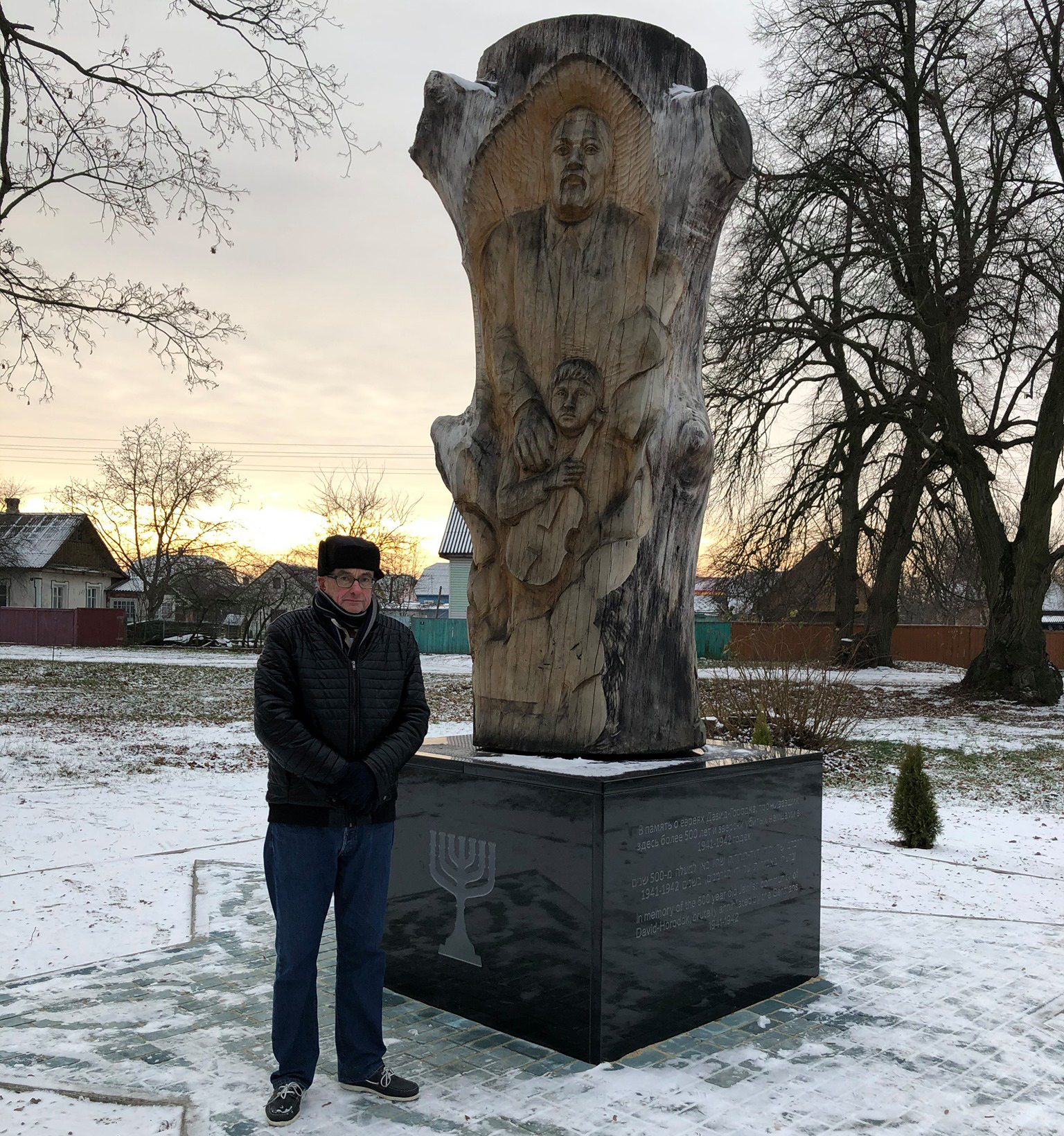
Ziv Begun standing next to the new granite and wood memorial sculpture in David-Horodok. Courtesy of Sinai Zilber.
“Ziv, we worked together on many topics but the highlight was the erection of the monument in David Horodok, a project you fought for personally. You did not give up on anyone, and in the end you got to see it in its perfection and even be photographed next to it. As part of this project we traveled together twice to Belarus and on these trips in particular, I got to know you as a leader, as a person and as a friend. With determination, optimism and great faith you fought everything that tried to torpedo the erection of the monument. You worked with political parties at all levels in Belarus. With private parties there, with the Israeli ambassador and you even reached the president before her. In the end you won! You were a man of truth and strove for justice without rounding corners, at the personal, organizational and state levels. At the same time, you were a man of the people. I saw how nicely you treated each and every one you worked with – with respect, warmth and generosity. Your work maintaining the mass grave site at David Horodok was so precious to you. Ziv, we as the organization’s committee, promise to continue on the path you have paved and to persevere in realizing the organization’s vision and goals, those you were privileged to formulate only a few months ago.”
Dovid-Shlaima Eisenberg was born in David-Horodok in 1841 and died in Los Angeles, California in 1948. He and his wife, Razel (Lutzky) Eisenberg were the parents of 13 children.
These photos of Dovid-Shlaima and his family were taken in 1947 when he flew from Detroit to Los Angeles at age 107. At the time he was the oldest person to ever fly on an airplane and his photo appeared in newspapers around the country.
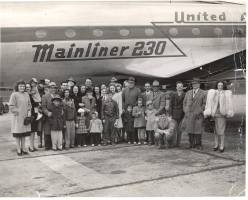
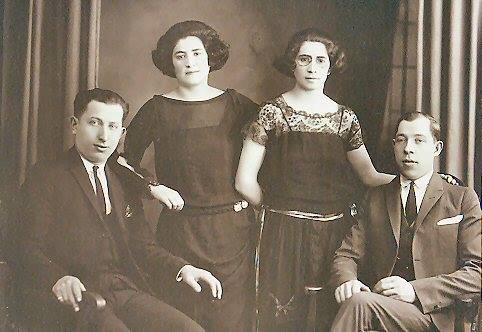 Two brothers from David-Horodok married two sisters from David-Horodok in Detroit, Michigan in the same year! The Fishman brothers immigrated to America in 1921. The Lansky sisters immigrated two years later. Less than a year after the sisters arrived in America, Sidney, the younger brother, married Bertha, the younger sister, on January 1, 1924. Morris, the older brother, and Ethel, the older sister, were married three months later on April 6th. Six years after the weddings, according to the 1930 United States census, the two Fishman families lived next door to each other on Hazelwood. Not only did they live next to each other, the two brothers worked together in their own grocery store.
Two brothers from David-Horodok married two sisters from David-Horodok in Detroit, Michigan in the same year! The Fishman brothers immigrated to America in 1921. The Lansky sisters immigrated two years later. Less than a year after the sisters arrived in America, Sidney, the younger brother, married Bertha, the younger sister, on January 1, 1924. Morris, the older brother, and Ethel, the older sister, were married three months later on April 6th. Six years after the weddings, according to the 1930 United States census, the two Fishman families lived next door to each other on Hazelwood. Not only did they live next to each other, the two brothers worked together in their own grocery store.
This photo was submitted to the Holocaust Memorial Center in Michigan by Milton (Morris and Ethel’s son) and Dee Fishman. From left to right: Sidney Fishman and his wife Bertha Lansky Fishman, Ethel Lansky Fishman and her husband Morris Fishman.
Hashomer Hatza’ir is the oldest Zionist youth movement still in existence. Established in Europe in 1913, on the eve of the first World War, its founders envisioned a new life for the Jewish people in Eretz Yisrael. The movement stressed the need for the Jewish people to normalize their lives by changing their economic structure (as merchants) and to become workers and farmers, who would settle in the Land of Israel and work the land as “chalutzim” (pioneers). They were influenced, as well, by the burgeoning socialist movement, and they dreamt of creating in their new homeland a society based on social justice and equality. In 1936, members of Hashomer were among the vanguard of the Haganah, the Jewish self-defense organization of Eretz Yisrael. In 1943, Mordechai Anilewicz, head of the Warsaw branch (Ken) of Hashomer, led the Warsaw Ghetto Uprising against the Nazis. After W.W.II, with the influx of Holocaust survivors and the need to settle and secure Eretz Yisrael, Hashomer Hatza’ir members founded some 30 kibbutzim in the years surrounding the creation of the Jewish State.
As a young man, Shimshon Gitelman was active in the David-Horodok branch of Hashomer Hatza’ir. Shimshon survived the Holocaust, created a new life for himself in Israel, and never forgot David-Horodok or its people. Amazingly, he contributed 1,118 testimonies to Yad Vashem for residents of David-Horodok, including his own family. Also, he recorded 90 songs for Beit Hatfutsot, the Museum of the Jewish People, in Tel Aviv. He dedicated the songs to the memory of his family and to all of David-Horodok’s Jews.
Sourced in part from Jewish Virtual Library.
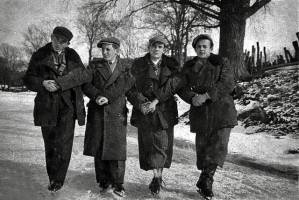
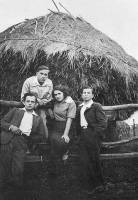
Cantor Shmaryahu Lansky was born in 1870 and was the chazan of the Choir Synagogue in David-Horodok. His choir, in part included his son-in-law Yerachmiel Rimor and grandson Motel Rimor. Lansky had also served as chazan in Mozyr, Belarus, a town east of David-Horodok. He perished in David-Horodok in 1941 during the Holocaust along with most of his family, with the exception of his two daughters who had emigrated to the United States.
Photos: The winter scene in David-Horodok shows (in back) Cantor Shmaryahu Lansky, his daughter Basha Rimor, his wife Toby, son-in-law Yerachmiel Rimor, and another daughter. In front, grandson Motel Rimor, and granddaughter (name unknown) holding a fur muff.
Cantor Lansky’s choir in the large Choir Synagogue. Lansky is in the center. To his right is his son-in-law Yechiel Rimor. The little boy is Motel Rimor, the Cantor’s grandson. All three, and his wife Toby perished in the Holocaust.
These photos are on display at the Holocaust Memorial Center in Michigan and were submitted by Esther Srole and Milton and Dee Fishman.
Litman Mor (originally Moravitchik), an original member of the underground in the Vilna (Vilnius) ghetto was born in David-Horodok in 1917. Poland and Lithuania both claimed Vilna (Vilnius) after World War I. Polish forces occupied Vilna in 1920, and before the outbreak of World War II, the city of Vilna was part of northeastern Poland.
Of the entire Moravitchik family who were still in David-Horodok in the 1940s, Litman was the sole survivor. He left David-Horodok to attend school in Vilna, Poland, escaped from the Vilna ghetto, became a partisan, and survived the war. In late 1941 he attended the gathering at which Abba Kovner read the proclamation of resistance, with the memorable phrase, “We will not go like sheep to the slaughter.”
In his oral history interview in the collection of the United States Holocaust Memorial Museum (https://collections.ushmm.org/search/catalog/irn502800) Litman speaks of how he obtained assorted jobs in order to be spared the forced labor deportation. He describes life in the Vilna ghetto and the crowded conditions, his membership in a five person underground cell working for the Judenrat and how they printed underground leaflets. He tells the story of his escape from the ghetto and going into the woods, where he joined the partisans; his assignments involving intelligence, getting food, collecting ammunition, and sabotaging airports and trains behind enemy lines. He also spoke about leaving the partisans at the end of the war, and the attitudes of those partisans towards Jews; how he spent time as a POW interpreter, assisting refugees to emigrate.
In 1946, Litman immigrated to Eretz Yisrael and was reunited with his two sisters who had immigrated earlier. He studied chemistry at the Hebrew University in Jerusalem and completed a Master’s degree in Public Health. He was among the founders and a director of the Food division in Israel’s Ministry of Health. In the 1960s, he Hebraized his surname to Mor. As Litman Mor, he wrote a book about David-Horodok and his life before and after the war. The book, written in Hebrew, was published in 2005 and later translated into English. The English version, entitled “The War for Life,” can be read in the Writings by Horodokers section on this website.
Mor passed away in Tel Aviv in 2022 at the age of 104.
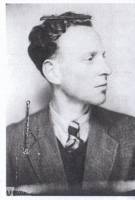
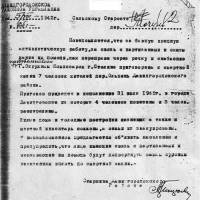
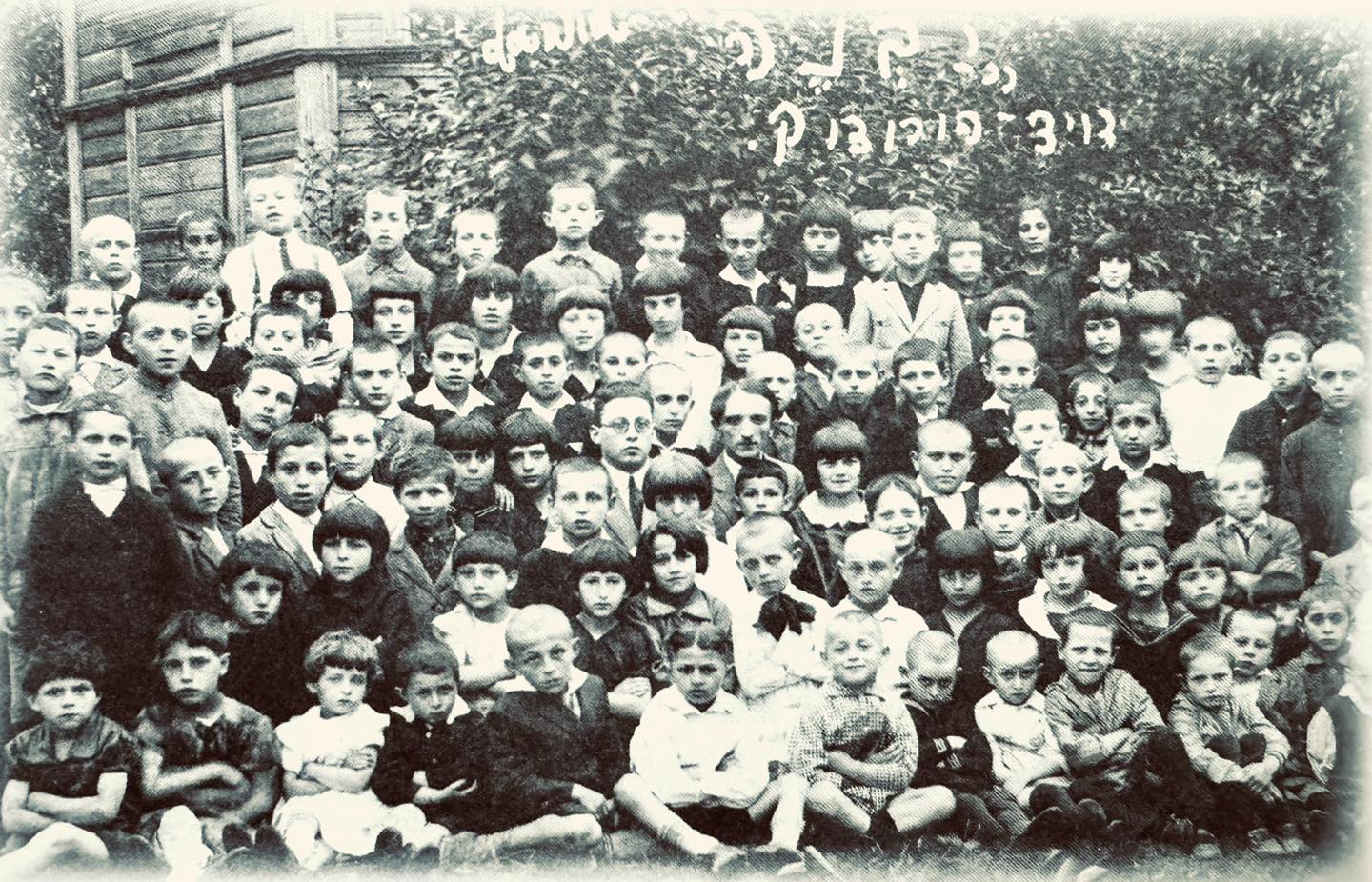
This postcard shows the 1926 Yavneh Class in David-Horodok in which Gershon Segelman was registered.
This postcard shows the 1926 Yavneh Class in David-Horodok in which Gershon Segelman was registered. It was sent by his mother Rose to his father who was in America. On the back is written in Yiddish: “Gershon is in the front row, seventh from the left. This is Moishe Gershale’s class that he just entered. Gershale’s teacher sends you best wishes for the New Year. On the card is also photographed Yitzchak and nephew. Please write a few words.”
Gershon Segelman left for the United States a few years later with his sister Bernice and mother Rose Eisenberg Segelman to join his father Yasha. He grew up in Detroit, and became a pioneer of Israel, moving there in 1946 with his first wife, He was an agronomist and plant physiologist and devoted his life to the building of the State of Israel.
In 1920, the Mizrachi movement (a religious Zionist movement founded in 1902) established the Yavneh religious schools. Originally called Torah va-Da’at, it was renamed in 1925; the language of instruction was also changed from Yiddish to Polish in order to obtain government recognition. Yavneh lagged behind and competed with rival Jewish educational networks like the secular Tarbut schools. Yavneh provided students with a well-rounded education in Torah studies, Jewish Nationalism and Zionism and a variety of general subjects.
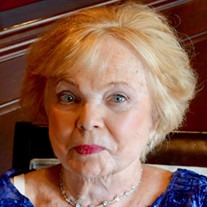 Descendants of David-Horodok mourns the passing of our landsfru, Beatrice Sonders ז״ל. Beatrice was a survivor of the Holocaust and the atrocities that befell her hometown of David-Horodok.
Descendants of David-Horodok mourns the passing of our landsfru, Beatrice Sonders ז״ל. Beatrice was a survivor of the Holocaust and the atrocities that befell her hometown of David-Horodok.
After decades of concealing the full account of her experiences, she chose to share her story in the recent memoir, Hiding in Plain Sight: My Holocaust Story of Survival (2108). With the help of a companion, Mort Horwitz and with an introduction by her grandson David Salama, the book is now at Yad Vashem and available online through Amazon.
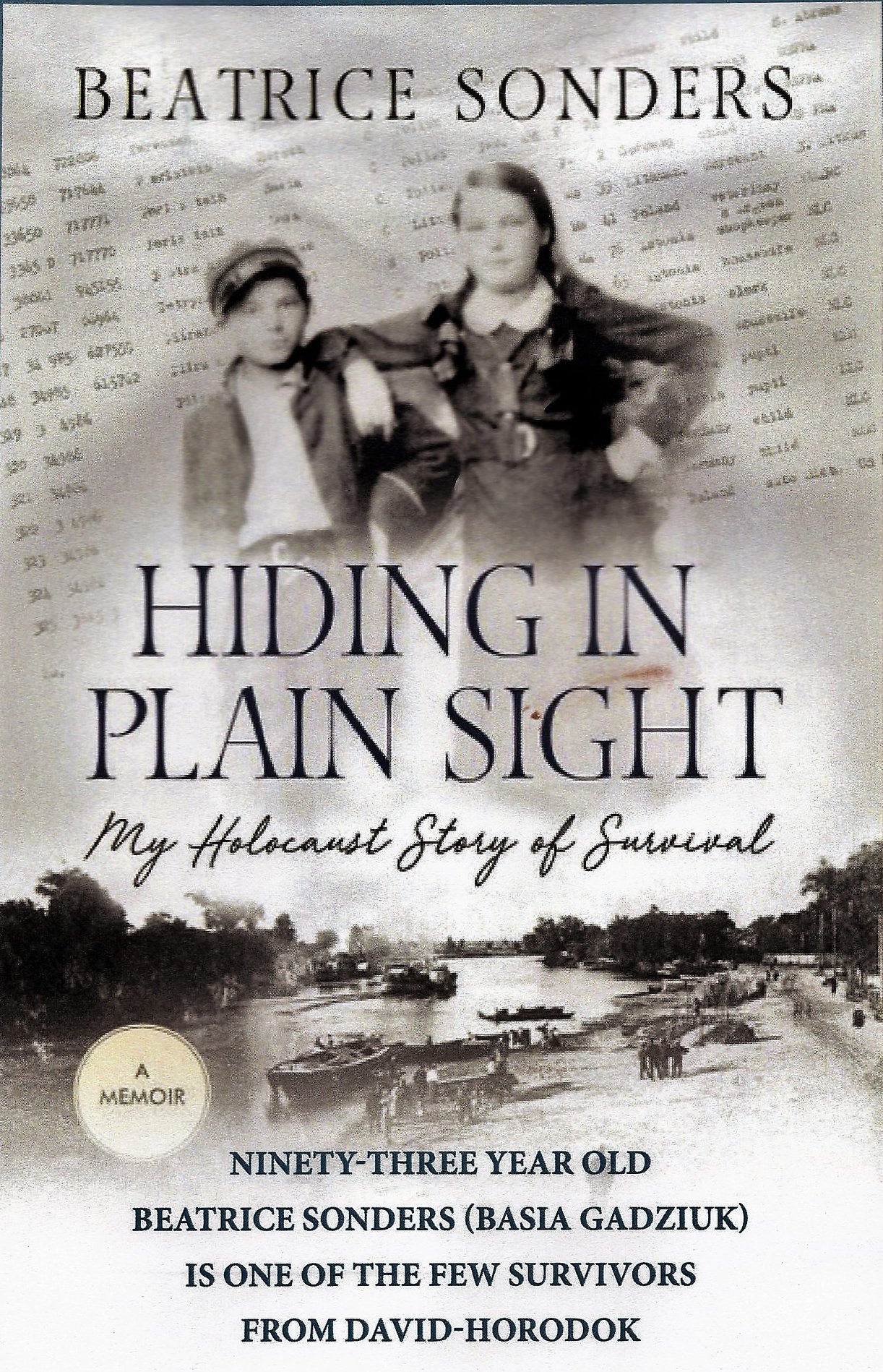 Born on November 27, 1924 in David-Horodok she was the daughter of Beryl and Reizel (Zietz) Gadziuk, Beatrice (Basia) and had a younger brother, Shalom. She spent her childhood surrounded by family traditions, belonged to the B’nei Yehudah Club, was a member of the Shomer Haleumi, a Zionist youth organization and attended the Hebrew-speaking Tabut school in David-Horodok.
Born on November 27, 1924 in David-Horodok she was the daughter of Beryl and Reizel (Zietz) Gadziuk, Beatrice (Basia) and had a younger brother, Shalom. She spent her childhood surrounded by family traditions, belonged to the B’nei Yehudah Club, was a member of the Shomer Haleumi, a Zionist youth organization and attended the Hebrew-speaking Tabut school in David-Horodok.
When the Germans and the Ukrainians obliterated David-Horodok in 1941, killing of all Jewish men in the town, everything changed. Left to fend for themselves, Basia and her mother fled 100 kilometers south, driven into the infamous Sarny ghetto. Tragedy struck again as the Germans liquidated the ghetto in 1942, and Basia went into the first of many hiding places. After years of running from soldiers, changing her identity, and hiding her faith, Basia emerged as a survivor – shepherding the rebirth of her faith and her family in America.
Beatrice passed away May 3, 2019 and was beloved wife to the late Beno Sonders. Devoted mother of Debra Feldman, Rita (Joseph) Salama and Bonnie (Morry) Levin. Mother-in-law of Michael Feldman. Loving grandmother of Lisa (Steve) Horowitz, Barry (Sheryl) Feldman, Jay (Jessica) Feldman, Eric Feldman, David (Pauline) Salama, Evan (Melissa) Salama, Jill (Jason) Handman, Julie (Eric) Greenberg, Dana (David) Saltzman and Lauren Levin. Proud great-grandmother of Charlotte Horowitz, Isabel Horowitz, Max, Olivia, Jonah, Avery, Dahlia and Stella Feldman, Elliot, Ari, Oliver, Molly, Benjamin and Ruby Salama, Alexis Greenberg, Eleanor Greenberg, Rosie Saltzman, Henry Saltzman. Sister to the late Sholom Gadzuk who was killed in the Holocaust. Ex-wife of the late Harold Perlstein, Beatrice is also survived by a dear companion, Art Becker.
Her video testimony was recorded by the Holocaust Museum of South Florida, The Steven Speilberg Shoah Foundation at USC and the Holocaust Memorial Center in Michigan. Watch a short segment of an interview with her from December, 1992. https://www.youtube.com/watch?v=QWUCg-m_hyY.
May her memory be a blessing. Zecher tzadeikes livracha